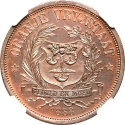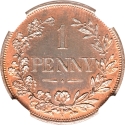You are about to finish your registration. Please check your mailbox (including spam folder). There should be a letter with a confirmation link. Check setting to make sure that your e-mail address is correct.
Send letter againDescription
The South African Republic (Dutch: Zuid-Afrikaansche Republiek, ZAR), often referred to as the Transvaal and sometimes as the Republic of Transvaal, was an independent and internationally recognised country in Southern Africa from 1852 to 1902. The country defeated the British in what is often referred to as the First Boer War and remained independent until the end of the Second Boer War on 31 May 1902, when it was forced to surrender to the British. The territory of the ZAR became known after this war as the Transvaal Colony. After the outbreak of the First World War a small number of Boers staged the Maritz Rebellion, declared the reinstatement of the South African Republic and aligned themselves with the Central Powers in a failed gambit to regain independence.
Engraver: Otto Schultz
Obverse
_Penny_1/1892-1898_06.04.2019_10.49-60.jpg)
|
Bust of President Johannes Paulus Kruger left surrounded by the country name. ZUID AFRIK. REPUBLIEK |
|---|---|
Reverse
_Penny_1/1892-1898_06.04.2019_10.49_01-60.jpg)
|
Arms of the Republic within a circular shield (the cart has a single shaft); value and date above. 1 PENNY ★ 1898 ★ |
| Edge |
_Penny_1/1892-1898_06.04.2019_10.49.jpg)
_Penny_1/1892-1898_06.04.2019_10.49_01.jpg)

